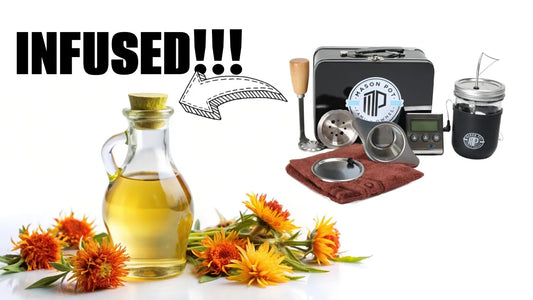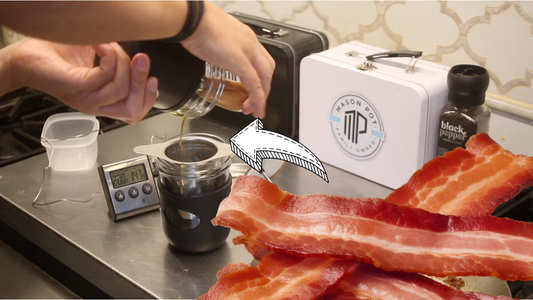Introduction to Safflower Oil and Cannabis Infusion
Safflower oil, derived from the seeds of the safflower plant, is a popular choice in kitchens for its neutral flavor and high smoke point, making it ideal for cooking at high temperatures. However, its utility extends beyond traditional cooking; it is also an excellent carrier for cannabis infusions. In this article, we explore the process of creating a potent cannabis-infused safflower oil, which can be used in a variety of culinary and topical applications.
The Decarboxylation Process
The first step in the infusion process is decarboxylation, a crucial method used to activate the psychoactive and therapeutic compounds in cannabis. For our infusion, we use a half ounce of Autumn brand cannabis smalls. These can be ground or broken by hand, as preferred. The cannabis is then placed in a jar with a silicone-sealed lid to ensure no valuable terpenes and cannabinoids are lost during heating.
Temperature and Time Precision
It's essential to maintain precise control over the temperature during decarboxylation. We aim for 240 degrees Fahrenheit for 40 minutes, though the temperature can safely reach up to 250 degrees without compromising the quality of the infusion. This specific temperature and time setting helps maximize the activation of THC, the primary psychoactive compound in cannabis, without degrading it or losing potency.
Adding Safflower Oil
Once the cannabis is decarboxylated, it's time to introduce the safflower oil. Adding one cup of oil to the cannabis material typically yields a potent infusion, but this ratio can be adjusted depending on the desired strength of the final product. The mixture is then returned to the oven, set between 190 to 200 degrees Fahrenheit, for a further two hours to complete the infusion process.
Importance of Cooling and Straining
After the infusion is complete, it's crucial to allow the mixture to cool before straining. This not only makes handling safer but also ensures that the infusion continues as the mixture cools, improving its potency. The final step involves straining the oil through a fine mesh to remove any residual plant material, resulting in a clean, potent cannabis-infused safflower oil.
Final Thoughts and Storage
The final product can be stored in small jars, which are convenient for personal use or for sharing with friends. Safflower oil's benefits extend beyond its culinary use; it is also known for its skin-enhancing properties, making this infused oil a versatile addition to both kitchen and bathroom cabinets.
In conclusion, creating a cannabis-infused safflower oil at home is a straightforward process that offers a potent and versatile end product. Whether used for cooking, as a tincture, or a topical application, this infused oil combines the nutritional benefits of safflower with the therapeutic properties of cannabis. Remember, personal experimentation with ratios and infusion times can help tailor the product to your specific needs and preferences. Always ensure safety and precision in the decarboxylation and infusion processes to achieve the best results.
Personal Experience and Recommendations
Throughout my experience with various oils for cannabis infusion, safflower oil has proven to be a unique choice due to its neutral flavor and versatility. Although I don't use it as frequently as other oils, its high smoke point and beneficial properties for skin application make it an excellent candidate for both culinary and topical uses. In future articles, I plan to delve deeper into why safflower oil isn't as commonly used in my recipes compared to other oils and explore its various benefits and applications in more detail.
Engaging with the Community
I encourage you, the reader, to not only try this recipe but also to engage with it creatively. Adjust the ratios, experiment with different infusion times, and see how you can customize the oil to suit your taste and therapeutic needs. Additionally, I welcome feedback and discussions on your experiences with cannabis infusions, particularly with safflower oil. Sharing insights and personal anecdotes can help enrich our collective understanding and appreciation of this versatile ingredient.
In closing, thank you for joining me in this exploration of cannabis-infused safflower oil. Whether you're a seasoned chef in the realm of cannabis cuisine or a newcomer curious about the benefits of infused oils, I hope this guide serves as a valuable resource and inspires you to explore the rich possibilities of cannabis infusions. Remember to conduct your own research, consult with experts if necessary, and always prioritize safety in your culinary adventures. Happy infusing!




